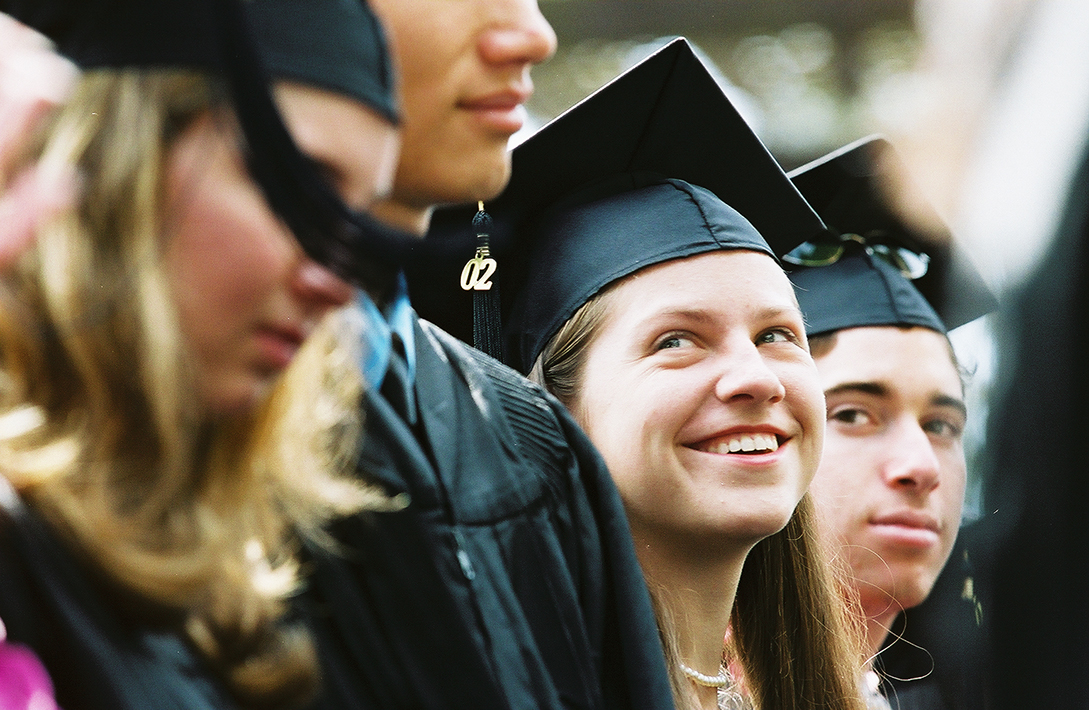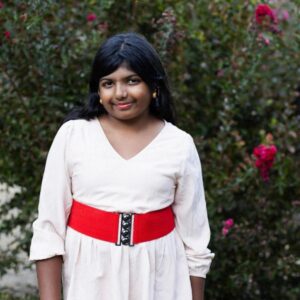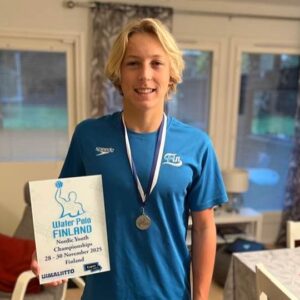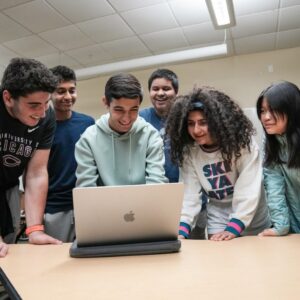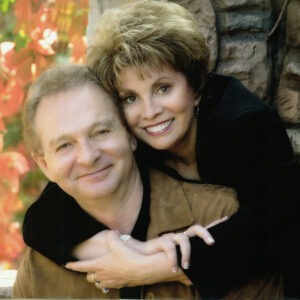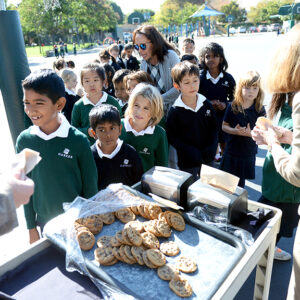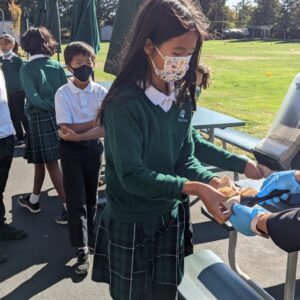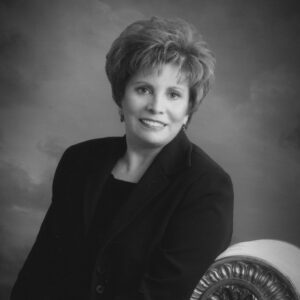This article originally appeared in the winter 2018 issue of Harker Magazine.
Last year, the upper school graduated its 20th class, a major milestone and validation of the massive risk and effort undertaken by Howard and Diana Nichols, as well as the staff, faculty and administrators who ran the school in its early years.
The idea of adding a high school program to Harker had been discussed as early as the late 1980s, as Harker parents had long expressed their wish for their children to receive a Harker education beyond the eighth grade. In 1996, Howard and Diana Nichols – then the president and head of school, respectively – decided it was time to pursue the idea in earnest. They formed a team of teachers and administrators to visit a selection of East Coast private schools, with the idea of incorporating their best practices into Harker’s approach to establish a high school that would also reflect Silicon Valley’s reputation for innovation and entrepreneurial spirit.
“Most of what was in the South Bay then were Jesuit schools,” recalled upper school history teacher Donna Gilbert, who joined Harker the year the upper school opened. “[Howard and Diana] Nichols tapped into something that was necessary, which was a nonsectarian college prep school for the valley. They hit the nail on the head.”
Diana Nichols set to work designing the school’s curriculum, working with the University of California to craft academic programs that would meet UC requirements. She was later appointed to a special committee of educational leaders formed by the University of California for the express purpose of helping other high schools develop UC-approved curricula. This proved to be one of the most challenging but crucial pieces of the upper school program. “Harker had never been in the high school business before, but knew we wanted to be a top-flight high school educational institution,” recalled facilities manager Mike Bassoni. In addition to visiting East Coast schools such as Phillips Exeter Academy and Choate Rosemary Hall, the Nicholses also attended hiring fairs in the New England area to capture the interest of teachers who they felt were a match for Harker’s mission.
“Diana and Howard were amazing. They were incredible leaders,” Gilbert said. “They had a vision, but they really wanted input from those of us who they hired.”
Harker’s upper school opened in fall 1998, with most of the first freshman class matriculating from the middle school. “I’d been at Harker [most of] my entire scholastic life at that point, and it felt more natural to stay and try launching this new high school than to not be an Eagle for those four years,” said Tiffany Duong ’02, who started at Harker as a first grader in 1990 and now works as a conservationist, restoring coral reefs along the Florida Reef Tract. Many among the first few upper school classes found the opportunity to set the standard for future generations exciting, dubbing themselves “guinea pigs” as a nod to the unique possibilities offered by a newly founded high school. “It was an exciting adventure and a chance to really form our own futures and a lasting legacy at Harker,” Duong said.
Teachers felt similarly, as many had come from established East Coast schools and were eager to help create a culture that would ensure success of the school’s mission in the coming years. “I just kind of felt like I was on the ground floor here, shaping culture, shaping curriculum, shaping courses,” said Abel Olivas, who started at Harker in 2002 as the upper school Spanish teacher and is now chair of the foreign languages department. “And also kind of shaping the minds of these young people.”
“We didn’t just have to create curricula, get them UC approved, get our classes up and running,” said Gilbert, “but build the culture of the school, the programs and the polices. It just sort of felt like an all-hands-on-deck kind of process.”
The feeling of being brand new also became evident to many students, some of whom felt hesitant at the prospect of spending their high school years at Harker. “There was definitely some hesitancy on my part about attending a new high school,” said Gabrielle DeMers ’03, who intended to pursue performing arts as a career. At the time, Harker’s upper school performing arts program was in the very early stages, and DeMers had planned to pursue music outside of school. “After my freshman year, Laura Lang-Ree became in charge of the performing arts and started building the Conservatory Certificate program.”
More faculty were added to the program, and before long, “Harker developed a very active performing arts program,” recalled DeMers, who received dual certificates in theater and music, in addition to being one of the directors featured in the first Student Directed Showcase. She went on to study music at the University of Southern California and the University of Maryland and is now a regular performer in the Washington, D.C., and Baltimore metro areas.
As more students and programs began to fill out the campus, the upper school began to feel more “legit,” as Duong recalled. “It wasn’t that we weren’t legitimate to start, but it’s hard for 100 kids to really feel like a high school,” she said. “As new, younger faces were added, traditions like class rivalries, Homecoming, junior prom and pep rallies came into being. This is when we really started to feel more like a high school instead of a brave new endeavor.”
For faculty, one of the major early changes to the upper school was the formation of chair positions for its various academic programs. This provided a process for teachers to express their ideas and concerns to administration, and share their day-today experiences. “It gave teachers more of a voice at the school and it just felt more democratic in a lot of ways,” Olivas said. “It would affect policies that impacted in-the-trenches work with the students. I think it was a very healthy change.”
Students at the time also saw their potential to impact school policy. In 1999, students wore jeans to school to protest what they felt was a toostringent dress code in what became known as the Jeans Rebellion. “Everyone who participated was thrown in detention and there was a school assembly to address our insubordination,” said DeMers. “We certainly got the administration’s attention and eventually compromises were reached on the dress code.”
They also realized their ability to blaze trails in other areas. Several student clubs were founded during the upper school’s first year, some of which still exist today or set a precedent for clubs or programs that would be established in later years. The Literary Magazine club first published Harker’s Eclectic Literary Magazine (HELM) during the 1998- 99 school year, and the periodical will celebrate its 20th anniversary in 2019. Additionally, the speech and debate club later evolved into one of the country’s highest-ranked speech and debate programs.
The following year saw the founding of what is now known as the Gender and Sexuality Alliance, or GSA, which has become one of Harker’s most active advocacy groups. Olivas saw the need for such an organization after overhearing students make derogatory remarks to one of their classmates in his first year as a teacher. He spoke with the students about their behavior, and “at one point, the kids were like, ‘Why do you care so much about this? Are you gay or something?’ And I said, yeah!”
Olivas and Gilbert, who had both been involved with similar movements on the East Coast, later met to discuss the formation of GSA. They agreed that being out to their students and the community was a crucial part of the groundwork. “We both knew that there had to be out teachers leading the movement to set the right tone and example,” she said. In the years since the GSA’s founding, Olivas has noticed more students comfortably expressing their sexuality and gender identities. “Now there are so many LGBT+ kids that are out at our school, and it was just interesting [to see the] evolution of the school, [because] for years the GSA was the [straight] allies, not the LGBT+ folks,” he said.
As the years progressed, “students began to have more of a voice and impact on the Harker environment,” DeMers said. “I remember wanting to switch into different classes with different teachers, like … taking Honors Latin IV instead of AP Latin. I basically ended up in a Latin class by myself. It feels like that sort of thing could only happen at Harker.”
Although the upper school grew at a steady pace, students and teachers at the time nevertheless felt closely connected as a community due to its relatively small size. “Even as we [grew as a] school, I didn’t notice so much a change in the level of intimacy, but a change in the level of activity,” said Jessica Liu ’04. “We were able to have more sporting teams, dances, and maybe lay the beginning foundations of school spirit. I felt proud to be part of something new and different.”
Other alumni noted how that feeling was common among the first graduating classes. “Being part of the second graduating class felt special because we had an intimate experience with the other inaugural classes,” Julia Gitis ’03 remembered. “Even though I was in the Class of ’03, I feel close to folks in ’02 and ’04. We all kind of went through it together.”
For some students, this provided comfort as they navigated the unfamiliar territory of a new school. “You practically knew the entire school, students and staff … whether you had classes together or not,” said Liu, who is now a clinical pharmacist. “I loved it. Coming from a large public school, this was something I’d never experienced before, and it immediately made the process of starting over at a new school less daunting.” The Class of 2002 also often took it upon themselves to make the students in grades below them feel welcome, perhaps remembering their own experiences dealing with uncertainty at a new school. “When they were juniors, they invited us sophomores to their prom,” said Gitis. “So the Class of 2003 was the only class with three proms: sophomore, junior and senior year. That was fun.”
Olivas recalled the environment his first year feeling “self-contained. Most of us taught at East Coast schools and we tried to get to know each other. We seemed kind of clique-ish at first. With time, we broke out of that and got to know the rest of the school better.”
Teachers also frequently found themselves in many roles. “We coached all the sports and ran all the clubs and chaperoned all the dances,” said Gilbert. “There was a lot of energy, because we had to do everything. I sort of felt like I was a first-year teacher again.”
While the task of starting a high school that matched Harker’s reputation often felt monumental, educators were inspired by the Nicholses’ vision for the school as well as its students. “The thing I liked about the Nicholses’ vision was this idea that they really believed that learning was fun,” said Gilbert, “and that engagement in class with ideas is exciting and energizing and it wasn’t this sort of mundane boring thing that you have to kind of doctor up to keep kids interested.”
Having moved to the Bay Area from Boston, Olivas originally planned to teach only for a short time before making a career change. “I … ended up enjoying teaching more than I ever had. That first year, I was having a really good time with my students and the energy was different [than on the East Coast],” he said. “I just felt better.”
Alumni have similarly vivid and fond memories of their years as Harker’s first upper school students. One in particular that Duong recalls is the beginning of an ongoing senior class tradition, the senior prank. “We took all the desks out of the classrooms and stacked them outside on the blacktops and then lined Dobbins Hall with little cups filled with water, blocking most door entrances to the classrooms,” she said. “It wasn’t crazy by any means, but it was awesome to see a math quiz being taken outside on the blacktop on those desks because they couldn’t get into their classroom.”
For many in the classes of 2003 and 2004, the departure of the first senior class in 2002 was a “a big deal,” said DeMers, who remembered doves being released to commemorate the milestone, a tradition that continues today. “Some of us joked that when … the members of the second class graduated, they’d release pigeons.”
The experimental spirit of the guinea pigs of the Class of 2002 – as well as the encouraging faculty and staff – inspired members of later classes to dream big and be daring in their own ways. “I think Harker instilled in everyone involved in those first years of the high school an entrepreneurial spirit and drive to do more,” said Duong. “That means our teachers were also sometimes our coaches. That our debate captain was also captain of the football team. That our student body president also took sculpture class and built our class gift. That the same students who led the Jeans Rebellion also led the class at Homecoming.”
Alumni frequently mention how the lessons learned from these experiences have been applied throughout their lives. “I felt close with my teachers and administrators,” said Gitis, who later became a teacher and now works as a product manager at Khan Academy. “They encouraged me to pursue my wacky creative ideas, like launching a video yearbook for our class. Those moments were empowering and pivotal in my growth.”
“I feel extremely lucky to have been a guinea pig, as it afforded me so many chances to step up and shape my own life and surroundings,” said Duong. “This confidence in my own problem-solving, resourcefulness and inventiveness has helped me at every juncture in my life.”
In addition to crediting Harker with helping her develop a solid work ethic, Liu said her time at the school facilitated “some of the best relationships and friendships I have today. It gave me the opportunity to meet some of the most intelligent, passionate, caring, hard-working and honest people that I have yet to meet anywhere else.”
